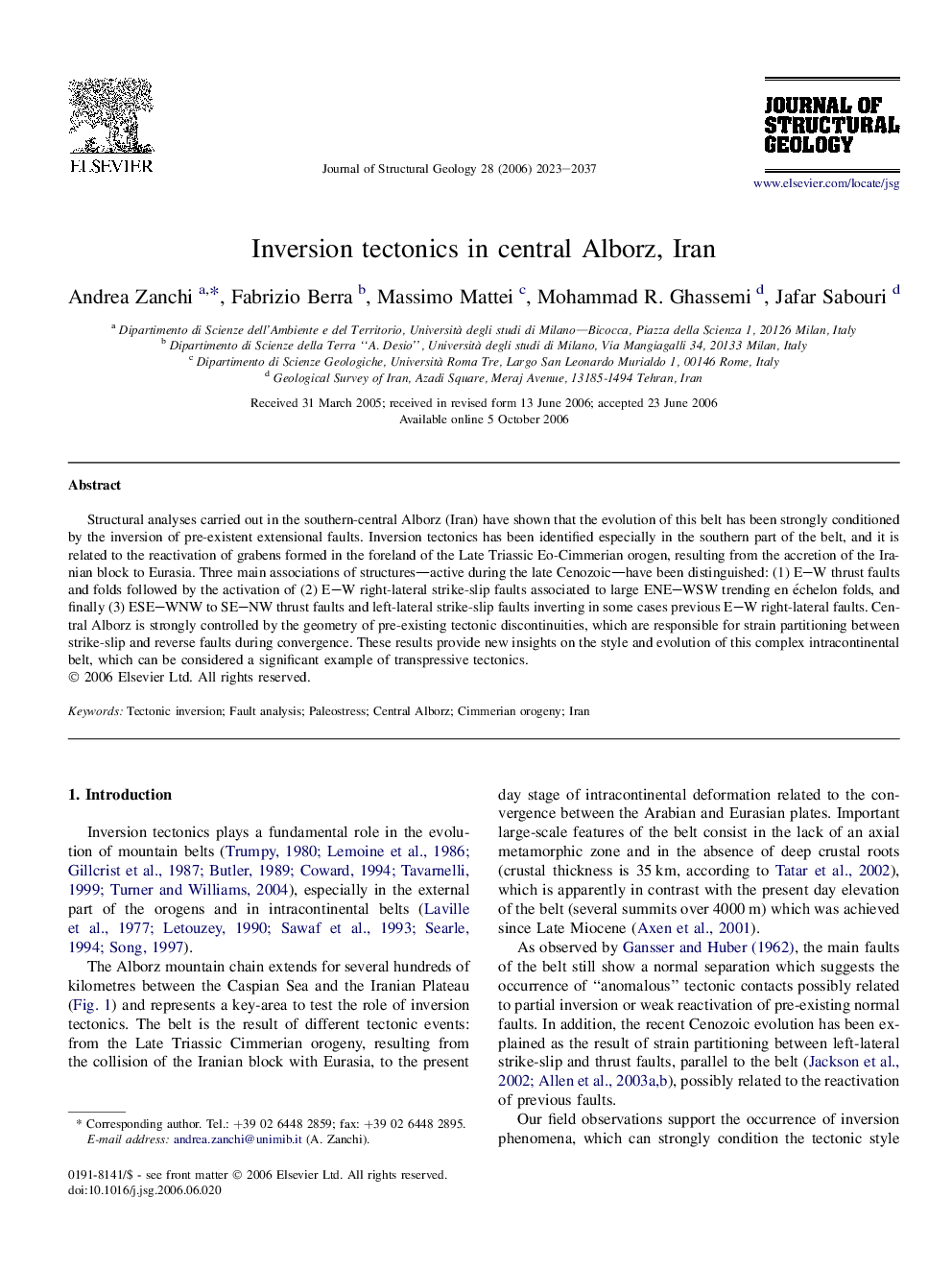| Article ID | Journal | Published Year | Pages | File Type |
|---|---|---|---|---|
| 4734489 | Journal of Structural Geology | 2006 | 15 Pages |
Structural analyses carried out in the southern-central Alborz (Iran) have shown that the evolution of this belt has been strongly conditioned by the inversion of pre-existent extensional faults. Inversion tectonics has been identified especially in the southern part of the belt, and it is related to the reactivation of grabens formed in the foreland of the Late Triassic Eo-Cimmerian orogen, resulting from the accretion of the Iranian block to Eurasia. Three main associations of structures—active during the late Cenozoic—have been distinguished: (1) E–W thrust faults and folds followed by the activation of (2) E–W right-lateral strike-slip faults associated to large ENE–WSW trending en échelon folds, and finally (3) ESE–WNW to SE–NW thrust faults and left-lateral strike-slip faults inverting in some cases previous E–W right-lateral faults. Central Alborz is strongly controlled by the geometry of pre-existing tectonic discontinuities, which are responsible for strain partitioning between strike-slip and reverse faults during convergence. These results provide new insights on the style and evolution of this complex intracontinental belt, which can be considered a significant example of transpressive tectonics.
